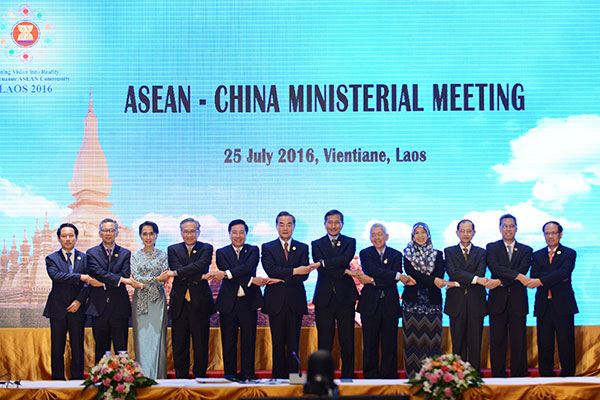
Foreign Minister Wang Yi (6th L) and other attendees of the meeting between Foreign Minister Wang Yi and his counterparts from 10 members of the Association of Southeast Asian Nations (ASEAN) pose for photos in Vientiane, capital of Laos, on July 25, 2016. China and ASEAN reaffirmed their efforts on July 25 to “promote peace, stability, mutual trust and confidence” in the South China Sea. [Photo/Xinhua]
VIENTIANE — China and the Association of Southeast Asian Nations (ASEAN) reaffirmed their efforts on July 25 to “promote peace, stability, mutual trust and confidence” in the South China Sea.
A joint statement was issued after the meeting between Foreign Minister Wang Yi and his counterparts from 10 ASEAN members in the Lao capital during the 49th ASEAN Foreign Ministers Meeting.
The countries recognize that “maintaining peace and stability in the South China Sea region serves the fundamental interests of ASEAN member states and China as well as the international community.”
They are also committed to the full and effective implementation of the Declaration on the Conduct of Parties in the South China Sea (DOC) and working substantively toward the early adoption of a Code of Conduct (COC) based on consensus.
The statement said China and 10 members of ASEAN “reaffirm their respect for and commitment to the freedom of navigation in and overflight above the South China Sea as provided for by the universally recognized principles of international law, including the 1982 United Nations Convention on the Law of the Sea (UNCLOS)”.
It also commits all parties to undertaking to “resolve their territorial and jurisdictional disputes by peaceful means, without resorting to the threat or use of force, through friendly consultations and negotiations by sovereign states directly concerned.”
The statement calls for the “exercise of self-restraint in the conduct of activities that would complicate or escalate disputes and affect peace and stability including, among others, refraining from action of inhabiting on the presently uninhabited islands, reefs, shoals, cays, and other features, and to handle their differences in a constructive manner.”
It permits parties “to explore or undertake cooperative activities in fields such as navigation safety, search and rescue, marine scientific research, environmental protection, and combating transnational crimes at sea.”
The statement also sees China and ASEAN members committing to encouraging other countries to respect the principles contained in the DOC adopted in 2002, saying the adoption of the COC would “further promote peace and stability in the region.”
The document follows the issuance of a joint communique issued by the ASEAN foreign ministers earlier in the day.
The 10 ministers said after a ministerial meeting that “We underscored the importance of the full and effective implementation of the DOC in its entirety.”
They also urged all parties to work expeditiously for the early adoption of an effective COC.
The document did not mention the ill-founded award issued by an ad hoc tribunal over the South China Sea arbitration unilaterally initiated by the Philippines.
China has dismissed the biased ruling as “null and void with no binding force.”
The government said it stands ready to continue to resolve the relevant disputes peacefully through negotiation and consultation with the states directly concerned on the basis of respecting historical facts and in accordance with international law.
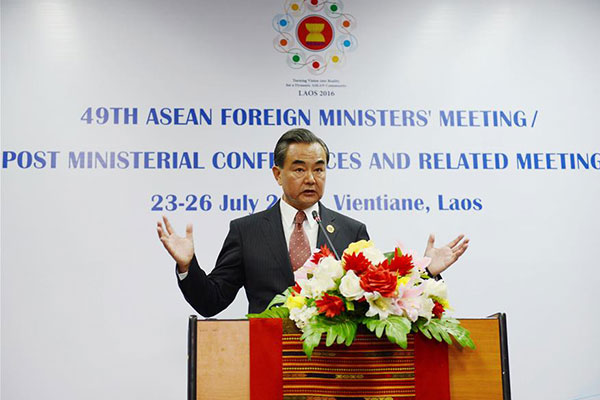
Foreign Minister Wang Yi attends a press conference after the meeting between Chinese Foreign Minister and the counterparts from 10 ASEAN members in Vientiane, Laos, July 25, 2016. [Photo/Xinhua]
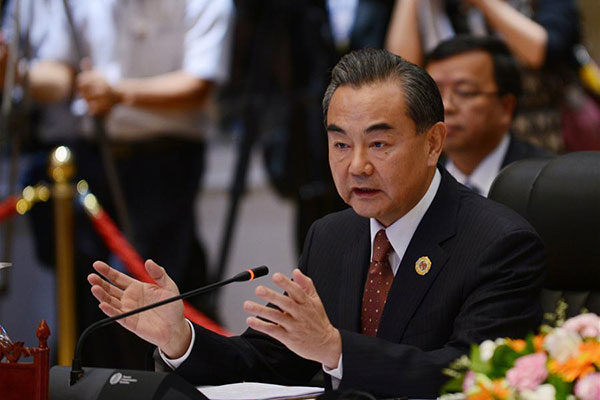
Foreign Minister Wang Yi attends the meeting with his counterparts from 10 members of the Association of Southeast Asian Nations (ASEAN) in Vientiane, capital of Laos, on July 25, 2016. China and ASEAN reaffirmed their efforts on July 25 to “promote peace, stability, mutual trust and confidence” in the South China Sea. [Photo/Xinhua]
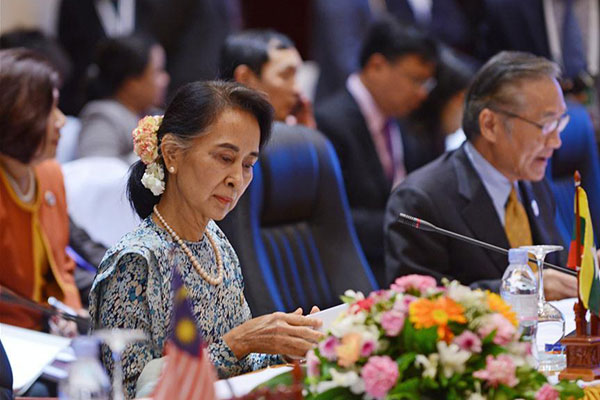
Myanmar State Counselor and Foreign Minister Aung San Suu Kyi (L) attends the meeting between Foreign Minister Wang Yi and his counterparts from 10 members of the Association of Southeast Asian Nations (ASEAN) in Vientiane, capital of Laos, on July 25, 2016. China and ASEAN reaffirmed their efforts on July 25 to “promote peace, stability, mutual trust and confidence” in the South China Sea. [Photo/Xinhua]
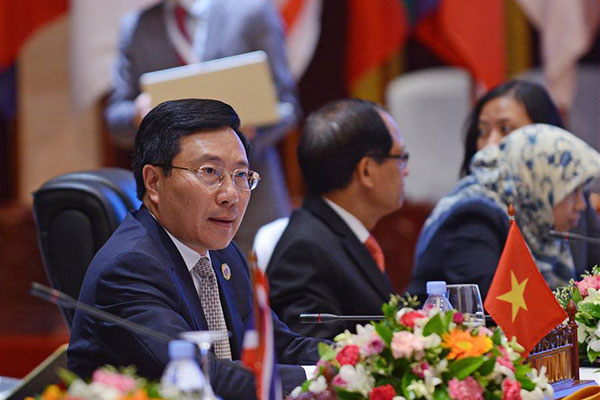
Vietnamese Deputy Prime Minister and Foreign Minister Pham Binh Minh attends the meeting between Foreign Minister Wang Yi and his counterparts from 10 members of the Association of Southeast Asian Nations (ASEAN) in Vientiane, capital of Laos, on July 25, 2016. [Photo/Xinhua]
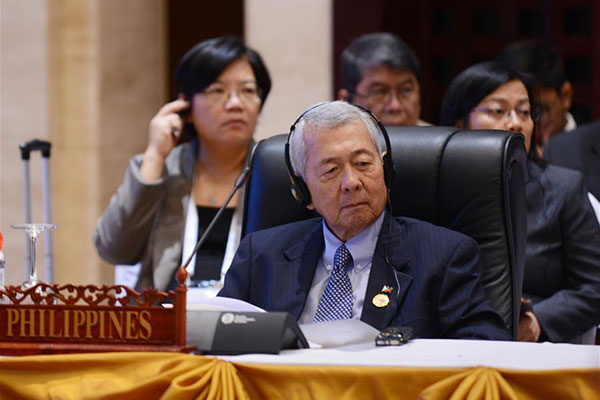
Philippine Foreign Affairs Secretary Perfecto Yasay attends the meeting between Foreign Minister Wang Yi and his counterparts from 10 members of the Association of Southeast Asian Nations (ASEAN) in Vientiane, capital of Laos, on July 25, 2016. [Photo/Xinhua]
